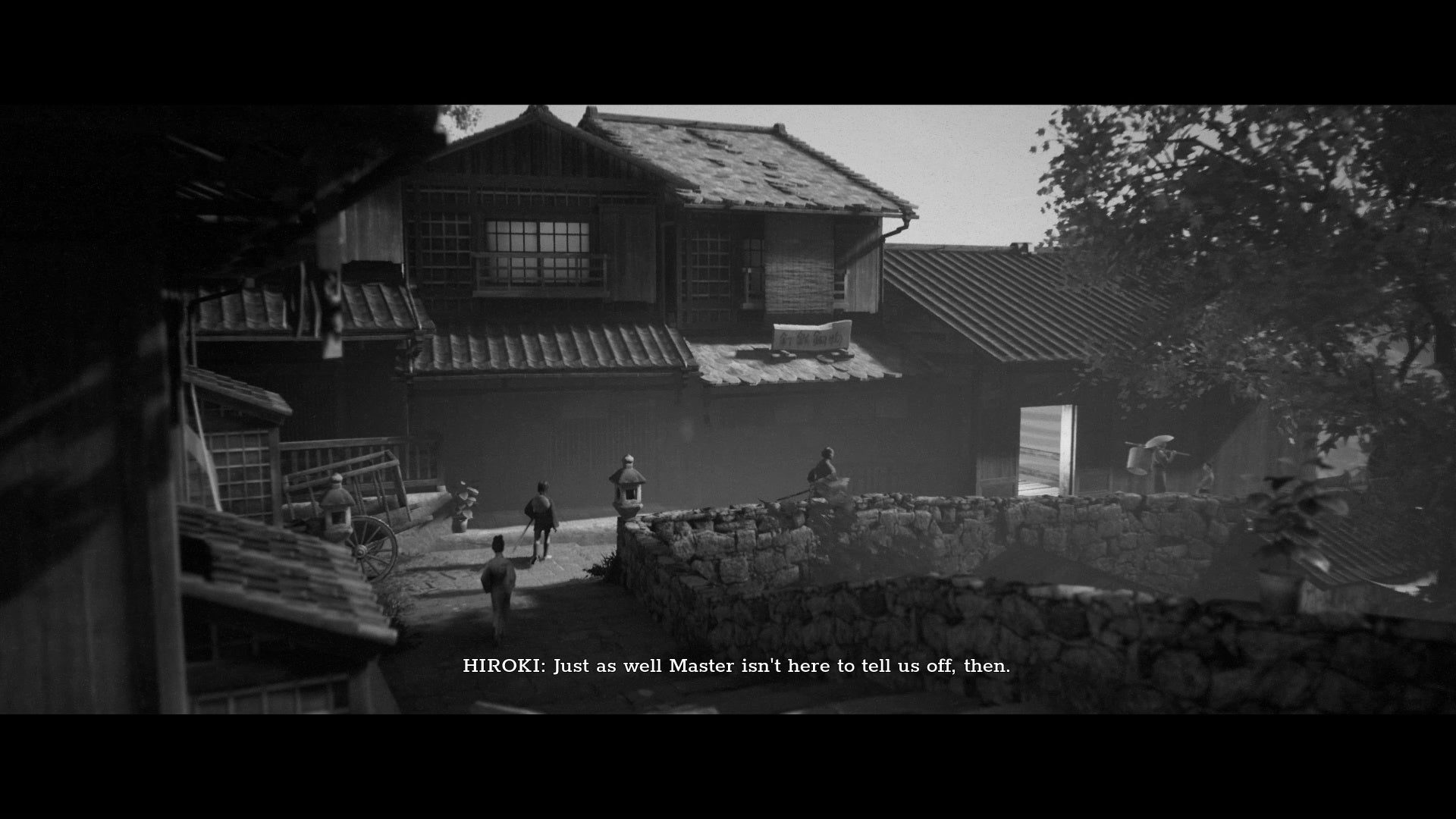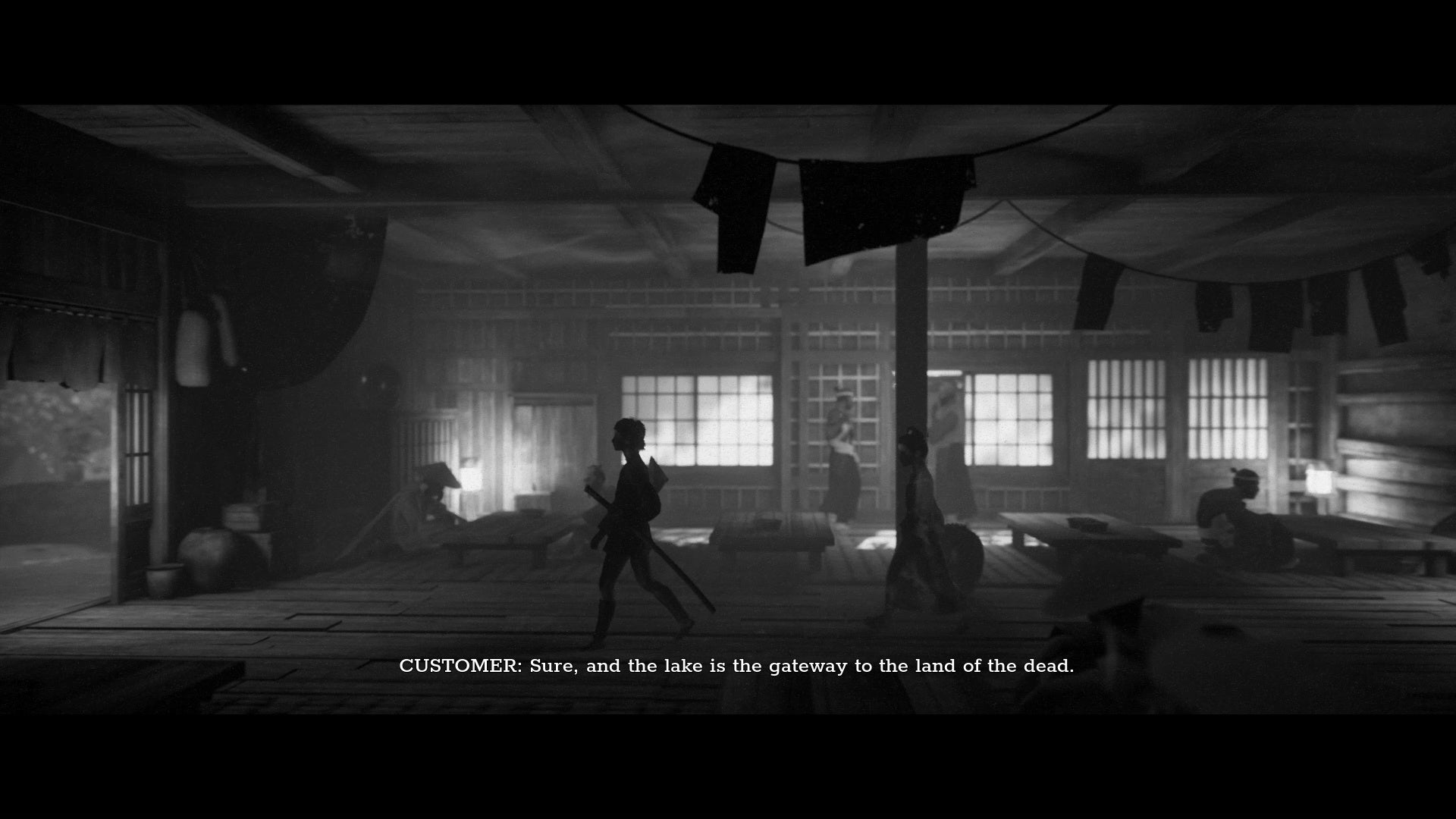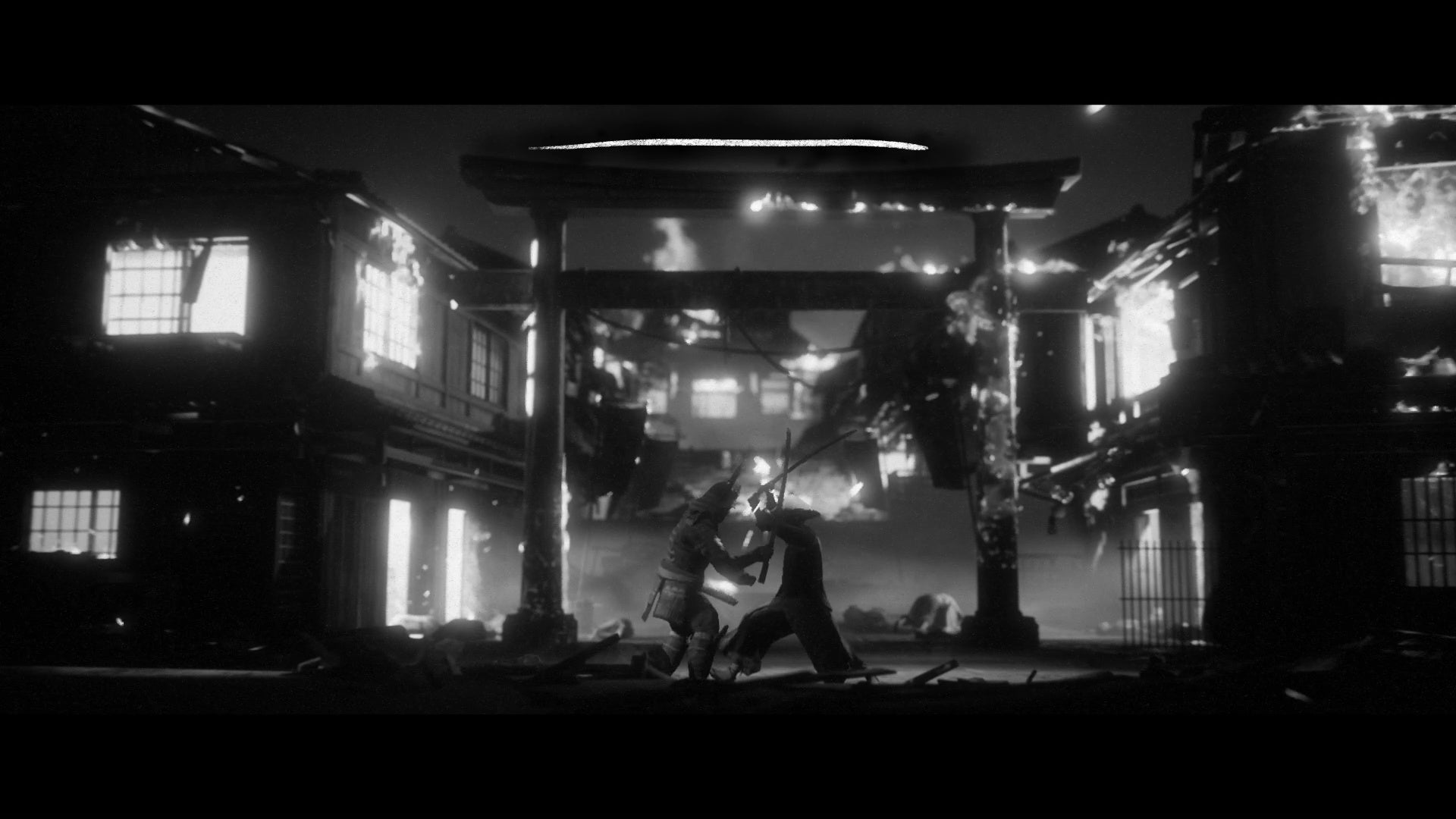Trek To Yomi chronicles the tale of a young samurai named Hiroki, whose village is raided by bandits when he’s only a ronin pup. Miraculously, he saves the day - hooray! Then time skips forward, and he has grown up, showcasing his newfound maturity with a defined jawline and fetching straw hat. The bandits swing by for round two, but this time it ends disastrously. The town is set ablaze, his beloved is nowhere to be found, and Hiroki himself is shanked through the ribs. Hiroki’s situation is dire, but there’s one saving grace: Yomi, the underworld. If he fights through the depths of Japanese purgatory, he might have a chance at turning from the one whom was shunk, to the one whom gets the last shank. And the game does a fantastic job of making Hiroki’s trek to Yomi feel like an actual trek, both exhausting and magnificent in equal measure. Magnificence lies most obviously in the game’s presentation, which channels the samurai flicks of old with a striking black and white colour palette coupled with a grainy sheen. Then there’s the camera work, which transitions from side-scroller to old-school puzzler as you either swing steel or traipse around in your tabi. As a young Hiroki strolls through a bar, the camera ensures you drink in the panorama of clinks and commotion. Fields billow in the wind and shrines rise from nowhere. Streets are sliced in two: light streams over roof tiles and cobbles lie in the dark. No matter what you’re up to, the camera does its utmost to make your journey an Instagrammer’s paradise. And the game puts you in situations which not only pay homage to classic samurai films but are cool as heck. The camera suddenly jumps forwards as you duel bandits in a traditional shrine room, with blood lashing against tatami and your silhouette obscured by sliding doors. At one point, you race across a barren plain, as spectral riders swing at you from horseback. The trek isn’t just a gleeful jaunt into and out of purgatory, though. You’re a samurai and samurai slash things, as evidenced by that YouTube video of a dude slicing through multiple water bottles with a katana. Instead of water bottles, imagine bandits. And… more bandits. Where scenery is always a pleasure on your trek, the combat is more erratic, veering from nice diversions to frustrating slogs. Not that the game’s combat is erratic in nature; far from it. Timing is everything, as you must learn to time your blocks, parry attacks, and swing when you glimpse the briefest opening. Your health bar isn’t generous, so loss of discipline can spell a swift death. The rhythm of the game is built on these fights as you move between shrines (checkpoints) keeping your life intact. At first, duels with bandits are tense juggling acts between deflects and swings, as you take on one or two, then three or four. Sometimes their frequency is relentless, too, turning checkpoint dashes into no-hit challenges as you know that there’s a particularly tough dude in armour waiting for you just before the shrine’s taunting tinkle. But then you gradually learn new combos that help pierce armoured enemies or let you spin around with a flurry of hits. You’ll find these either by chopping down tough lads or going off piste whenever the game’s linear path allows. These upgrades add some depth and make it feel like you’re growing as a warrior, but as you delve into Yomi and beyond, it’s up to you to keep combat interesting. Combos are about as raucous as it gets. Enemy variety isn’t Trek To Yomi’s strong point. Even in the depths of the underworld, with its skull-lined riverbanks and shape-shifting traps, you’re tackling ghostly dudes who aren’t far off the regular dudes on the surface. Sure, there’s a guy who flings knives at you, or one who teleports about, but the frequency of your fights with these folks quickly grates. Instead of offering up weird and wonderful monstrosities, time and time again you’re slicing through the same handful of baddies in different formations. Diamond, 4-4-2, whatever Pep Guardiolasan might throw at you, it’s hard to shake the feeling that you’d rather not have to tackle his teams on the neverending conveyor belt. Bosses are better, as they’re both meaningful adversaries and twisted beings that don’t always resemble the human template. Often, they hit you with new obstacles to scurry away from or moves to dodge. They’re terrifically demanding at times but always refreshing, like an XXL Tango Ice Blast after numerous sips of Oasis. Still, Trek To Yomi doesn’t quite reach the heights I’d hoped, in all honesty. The game’s combat can’t match its beauty, but it’s a journey worth embarking on if you’re after a bitesize story of revenge – who doesn’t love revenge? - that’s got some of the most striking visuals around. This rings especially true if you’ve got Game Pass, as it makes for a perfect package filled with pretty things.




